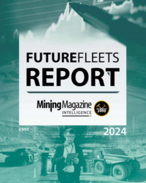Overall however, global growth in the seaborne market will remain broadly subdued due to expectations for a further retreat in Chinese imports of 4-5Mt.
Following on from last year, China’s appetite for imports has waned thanks to a combination of a slowing steel sector, lower coke prices and the continued uncertainty regarding trace element standards being enforced on met coal imports, principal steel analyst for Wood Mackenzie Ronnie Cecil said.
“In 2015, the combined net increase in global seaborne demand will just about be sufficient to offset the negative China impact this year,” he said.
“India offers the main ray of hope with steel production growth on course to advance 4% this year boosting demand for imported met coal.
“Growth wise semi-soft coking coal (SSCC) and pulverised coal injection (PCI) coal, both used in steelmaking, will continue to see imports rise sharply thanks to steelmakers’ ongoing focus on hot metal cost reduction. Meanwhile, the scarcity of good quality premium hard coking coal locally will continue to support imports.”
Looking further ahead, India is expected to remain a key driver of global met coal trade growth over both the medium and long term. Of the 123Mt rise in global trade projected by Wood Mackenzie out to 2035, India is expected to account for 40% of this, with China contributing 28%.
“We expect rising Indian demand to overtake Japan – currently the biggest importer – in 2025 before reaching parity with China by 2035. This begs the question of whether India will be the next China,” Cecil said.
For the medium term from now to 2020, Wood Mackenzie said China is expected to resume its charge on the coal import front, with imports heading over 100Mt. However, with peak hot metal demand set to kick-in around the same time at 880Mt, this will temper further upside for Chinese coal imports longer term.
























